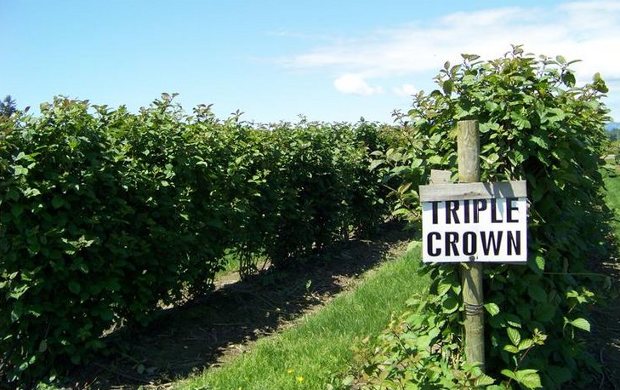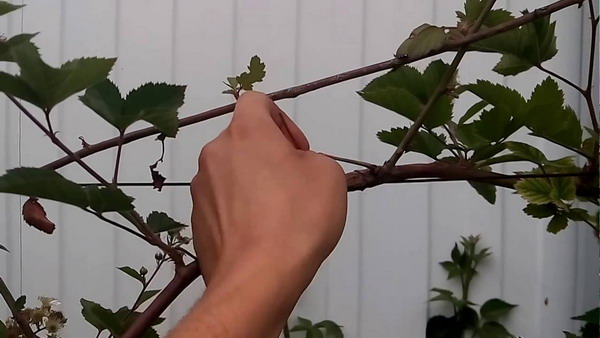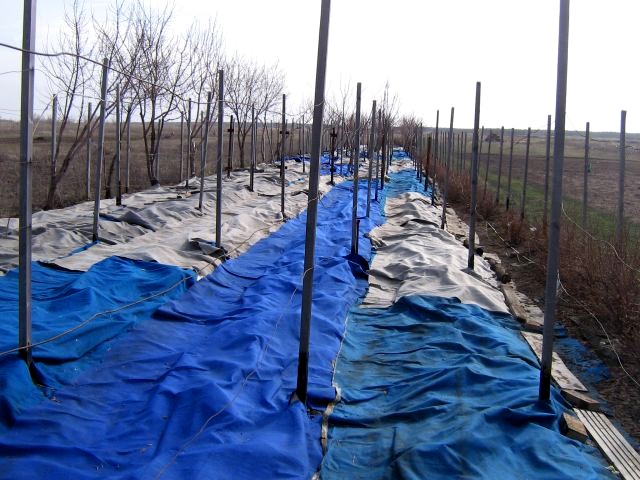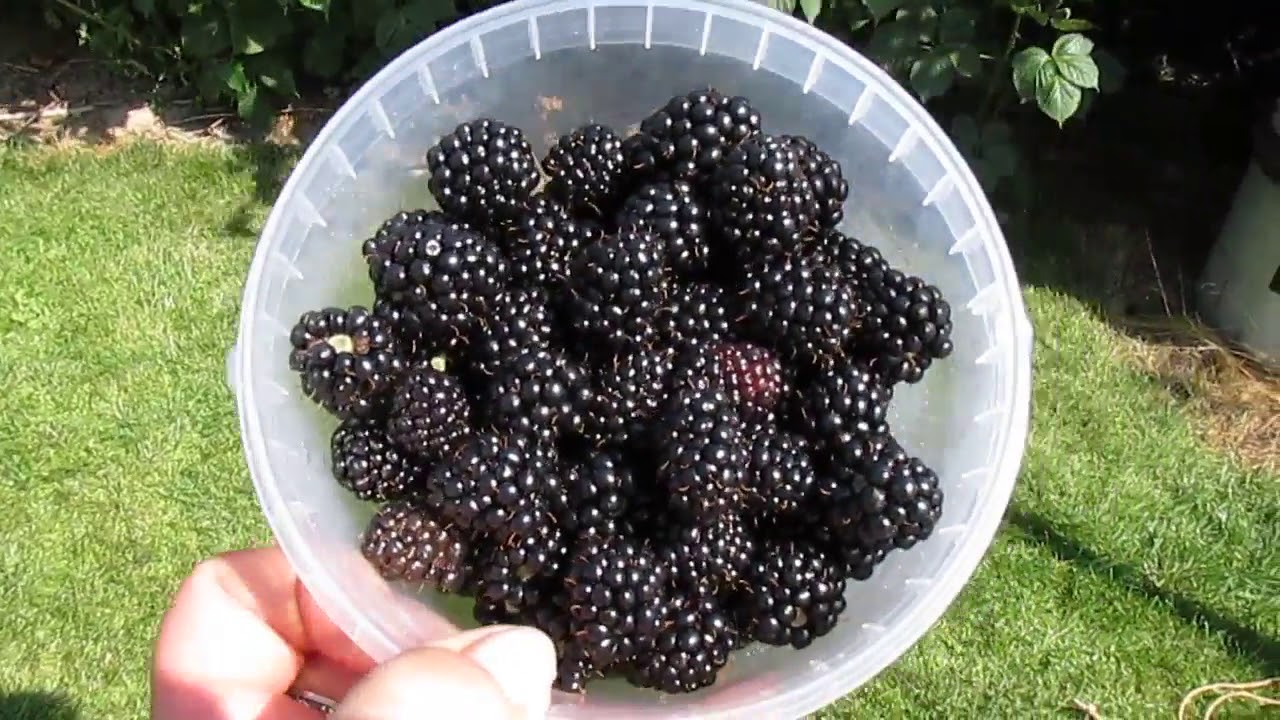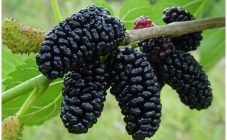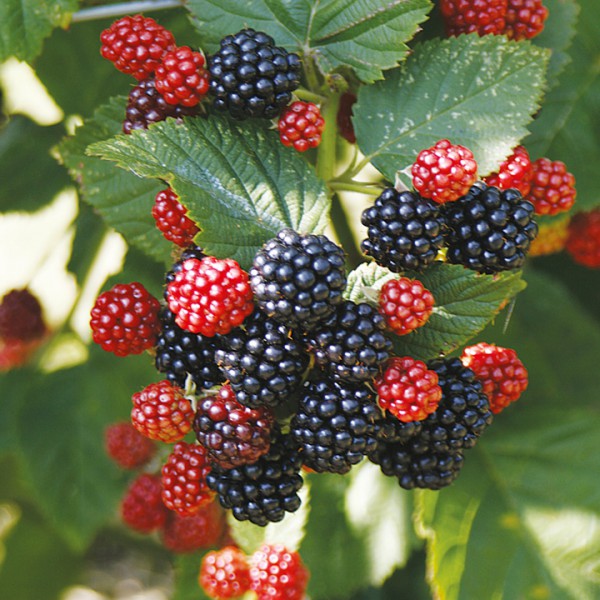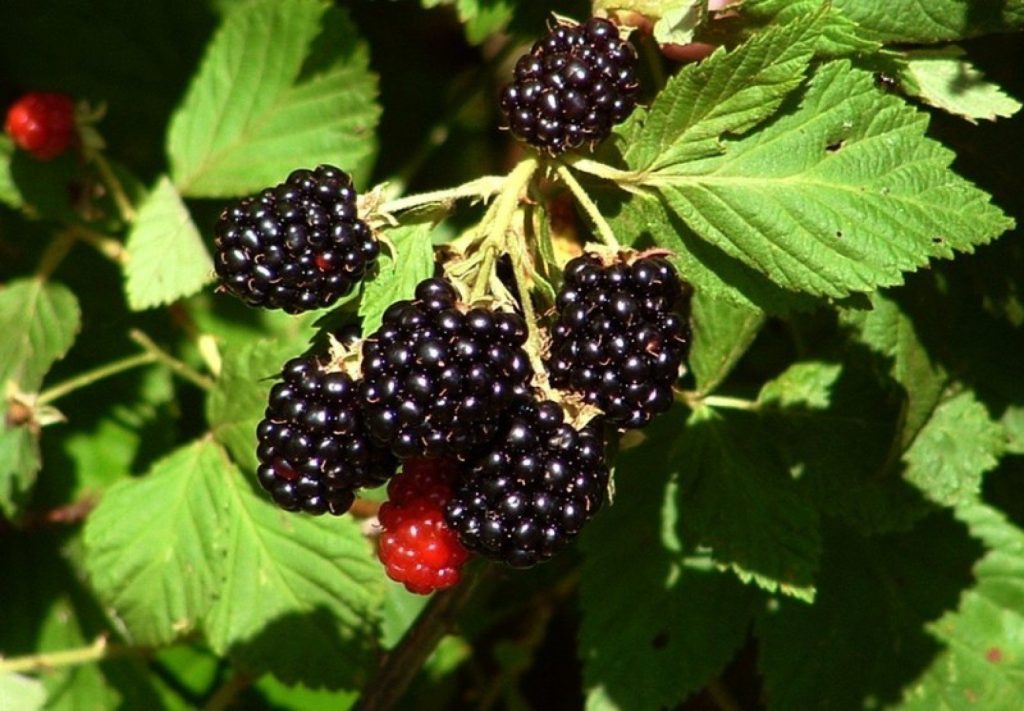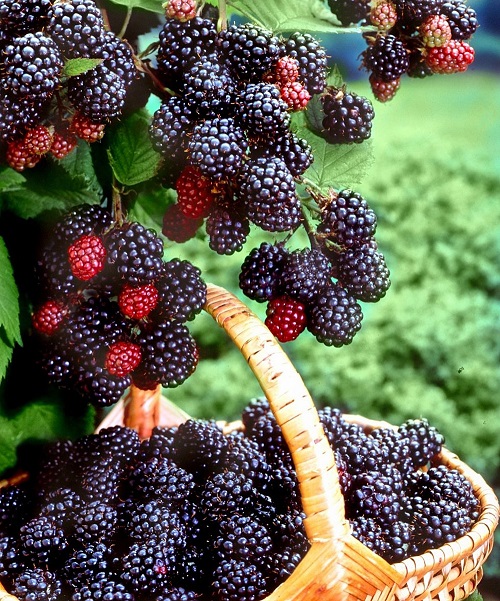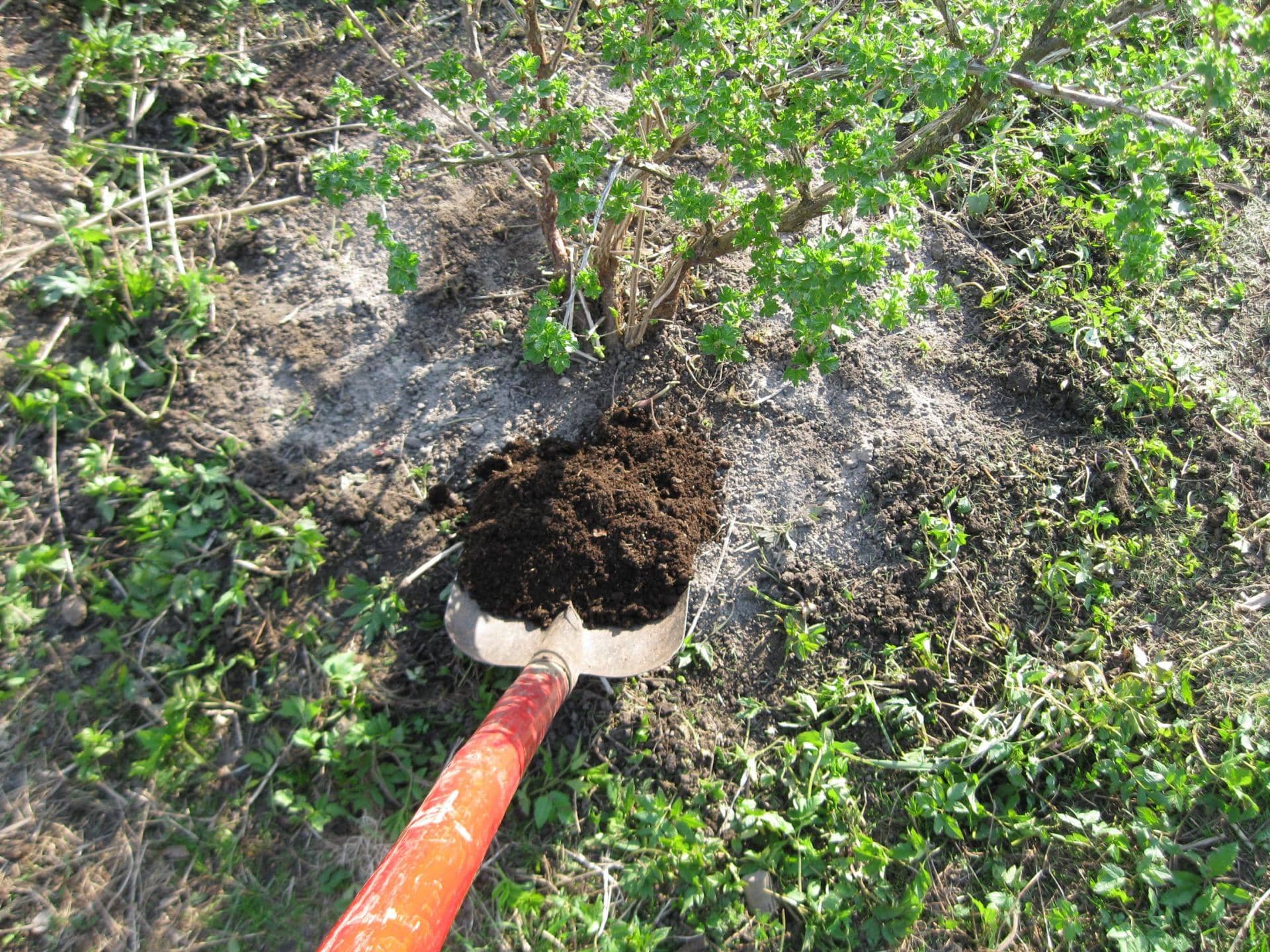Content:
Blackberry Triple Crown has already gained popularity among summer residents for its unusual taste and care features.
Description and characteristics of the Triple Crown blackberry variety
The description of the Triple Crown blackberry can be represented by the following points:
- the plant has medium late ripening periods - harvesting occurs in the second half of July, August and lasts until October;
- black, round, shiny fruits are large enough for a given culture and reach 9 g each; this allows you to take up to 13 kg of fruit from each bush;
- berries are clearly collected on the branches like a grape bunch;
- the Triple Crown blackberry has firm pulp with small seeds, with a spicy plum and cherry flavor;
- sweet taste is complemented by pleasant sourness;
- another special characteristic of fruits is that they do not bake in the sun;
- the berry also does not crumble and does not shrink by the end of the season;
- blackberry is transportable and does not lose its presentation;
- the harvested berry is perfectly stored for several days in the refrigerator.
The bush itself has distinctive features:
- there are 2 varieties of this variety: in some plants, branches are straight-growing, in others - creeping along the ground;
- another pleasant characteristic for gardeners is non-prickling stems, which makes it easier to care for the berry and easier to harvest;
- also attracts growth activity - already in the first year the branches reach 2 m, on average, the bush has a 3-meter height;
- the green toothed leaf is similar to the currant.
When describing the blackberry variety Triple Crown, it should be mentioned that this is a rather bushy culture, which bears the most fruit in close proximity.
Growing Blackberry Triple Crown
It is not difficult to grow this variety - the berry is not particularly picky about the conditions of existence. But proper care will help to achieve high yields. The Triple Crown blackberry is little supplied to the industrial stream, but gardeners are actively planting it on their plots.
Site selection and soil preparation
Berry growers love sunny places. In the Three Crowns blackberry, the fruits will be small and sour if you choose a corner for planting in the shade. You can safely take open areas with great access to light for the formation of blackberries. Alternatively, it is recommended to use the berry garden as a hedge - the bushes grow quickly and become impassable.
Note! For this variety, such a feature is remarkable - the plant is undemanding to the choice of the type of soil.
Blackberries will yield a good harvest on alkaline loams. The main thing is that the soil is light and perfectly permeable to moisture. But still, it is recommended to add fluff or wood ash to the site if the composition of the soil is not moderately acidic.
When preparing the pit, one more characteristic of the bush is taken into account - a sufficiently developed root system. Therefore, the excavation is done as for planting a tree - at least 0.6 m in diameter.
Wood ash (3 cups) and humus (20 kg) are added to the soil taken out of the pit. Then the land is divided into 2 parts. Mineral water (75 mg) is introduced into the first, and this part is poured into a tubercle on the bottom of the pit.
Planting seedlings
Planting a blackberry begins with the fact that the seedling is placed on a tubercle of earth and its roots are evenly distributed in the hole.The seedlings are covered with the second part of the soil and tamped down so that the root neck peeps out over the ground. After that, the soil under the bush is watered, and the shoots are cut off, leaving 8-10 cm each. Mulching with humus or sawdust is mandatory.
It is recommended to form the berry in the spring - so the plants will have time to gain green mass over the summer. If the work is carried out in the fall, then the bush will have to be covered with a spandbond and left to winter in this form.
If you plan to break an extensive berry field, then planting is carried out at a distance of 1.5-2 m between the bushes. In the row spacing, 2.5 m is kept. In view of the fact that the bushy blackberry grows too much, some gardeners try to leave more free space for each bush. But the peculiarity of the Triple Blackberry is that in close quarters it gives more harvest.
Care advice
If a blackberry culture is unpretentious, this does not mean that it does not need care. Some points still have to be observed, then the shrub will bear fruit for at least 15 years:
- All basic weeding, as well as loosening of the soil, are carried out only in the first weeks after planting the seedlings. In the future, overgrown roots located close to the surface may be damaged from such actions;
- Watering the culture can be entrusted to nature if the weather is moderate, but in a hot season without rain, you will have to apply at least a bucket of water under each bush once a week during the periods of ovaries and fruiting;
- You can speed up the ripening of fruits if you create a greenhouse effect in the spring by temporarily covering the bushes with a film;
- The branches strewn with berries will have to be fixed on a trellis, consisting of rows of wire stretched over 2-meter supports. The first tier is located at a height of 0.5 m from the ground, 2 and 3 - also every half a meter.
The stalks are tied as they grow. When the branch reaches the last wire row, its crown is cut off. This stimulates the growth of side shoots, which will bear fruit the next year.
Note! At the end of the harvest, the spawned branches are completely removed, and new shoots are thinned out - there should be no more than 8 of them on the bush.
Top dressing
The abundance of fruiting weakens the berry bush, so top dressing should be carried out periodically. So that the fruits have enough strength for development, every spring organic matter is introduced under the bush - an infusion of chicken droppings or mullein. You can also use urea or saltpeter. Every 2 years (for the third) a mixture of superphosphate, potassium and humus is scattered around the bush.
Features of berry propagation
In order to get "kids" from the already fruiting triple crown blackberry bush, in the spring, some of the lateral shoots formed last year are slightly shortened and bent to the ground. Having fixed the branches to the ground with small brackets so that they do not straighten, sprinkle with soil with a layer of 10 cm. After that, the layers must be watered abundantly.
The stems prepared for reproduction will thoroughly root by the end of summer, but it is necessary to separate them from the mother bush only next spring, otherwise they will not survive the winter. When the next growing season comes, the "baby" is detached from the bush and transplanted to another area.
About diseases and pests
The Triple Crown is attractive to summer residents with resistance to diseases, but this variety is sometimes attacked by bacteria and fungi. The most common diseases for Triple Crown:
- Fragmidium ruby is a fungal infection, also called rust; spores of a yellow tint first cover the foliage, then quickly spread throughout the plant; on buds and shoots, mature spores look like black dots;
- Septoria - bacteria infect shoots, altering the color of the bark on them; the stems crack, the buds fall off; if the fruits have already set, they stop developing and do not ripen.
Eliminate these problems at the initial stage of development, so as not to completely lose the berry.For the treatment of bushes, an infusion of garlic or milkweed is used (200 g per 2 liters of water). The solution is infused for a day, then filtered. Since the infusion is concentrated, it must still be diluted in a ratio of one to twenty and only then spray the plants.
Winter hardiness (frost resistance) varieties
In berry crops, their frost resistance is valued. As for the triple crown, the plant is not suitable for the northern regions - it does not tolerate winters well. Even when grown in the suburbs, the bushes will have to be carefully covered from freezing.
Note! Low winter hardiness is not the only negative for areas with a cold climate. In these areas, the bushes will not be able to bear fruit until October, as is the case in the southern edges. Therefore, the plant will give a low yield, which makes the variety impractical for industrial cultivation.
And in areas with warm winters, blackberries should not be left without shelter. First, the stems are prepared in this way:
- removed from garters;
- those that bear fruit are cut off;
- replacement branches are laid on the ground and straightened so as not to break.
The stems are first wrapped with spandbod, then covered with polyethylene. If everything is done correctly, blackberries will calmly endure cold temperatures down to minus 15 degrees. Otherwise, the branches under the shelter will begin to rot and freeze.

